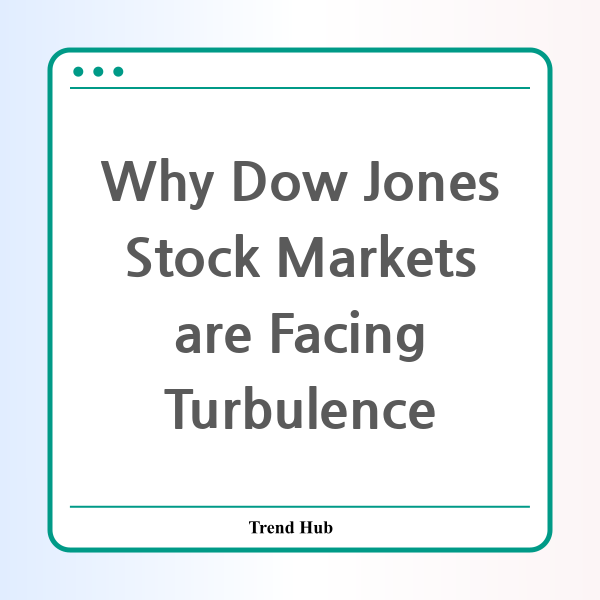* This website participates in the Amazon Affiliate Program and earns from qualifying purchases.

Have you been watching the Dow Jones stock markets lately? If so, you are not alone. Recently, the Dow has seen some significant fluctuations, closing lower by as much as 817 points in a single day. What’s driving this volatility? Let’s explore the key factors leading to recent market turbulence and what it means for investors.
First, one of the main catalysts for the downward trend in the markets has been the rise in Treasury yields. Recently, the yield on long-dated Treasury bonds surged, hitting its highest levels in several months. This shift signals a growing concern among investors regarding the United States' fiscal health. High bond yields can make holding stocks less attractive, thereby pushing down stock prices as investors move their money to safer investments, such as bonds.
In a recent auction, the demand for 20-year Treasury notes fell short of expectations, with yields climbing above 5%. This weak demand is likely a reaction to the market's apprehension about rising deficits. According to financial experts, concerns about President Trump's new tax bill, which is expected to exacerbate the federal deficit, are also fueling investor worry. As the federal debt-to-GDP ratio rises, exceeding 123%, the markets begin to show signs of stress.
Moreover, the recent downgrade of the U.S. sovereign credit rating by Moody’s from Aaa to Aa1 has intensified market jitters. Even though this downgrade was anticipated, it has reignited concerns about the U.S. economy's overall stability and long-term growth prospects.
As the stock market continues to grapple with these pressures, it's crucial to scrutinize the latest developments. On a recent trading day, the Dow lost 816.80 points, bringing the total drop to nearly 1.91% for the day. The S&P 500 and Nasdaq followed suit, with losses of 1.61% and 1.41%, respectively. Nearly 90% of stocks on the NYSE experienced declines, reflecting widespread unease across the market.
Interestingly, while traditional stocks faced headwinds, cryptocurrencies like Bitcoin have gained attention, reaching record highs above $109,000. This paradox highlights how some investors are seeking alternative investment avenues amid increased volatility in the stock markets.
What should investors do in light of these developments? First and foremost, it is important to stay informed about policy changes and fiscal decisions emanating from Washington, D.C. The potential passage of new budget bills could further impact the deficit and market sentiment. As discussions around tax policies continue, keeping a close eye on the relationship between bond yields and stock performance will be crucial.
In conclusion, the Dow Jones stock market’s recent turbulence can be attributed to rising Treasury yields, concerns over the national deficit, and investor sentiment reacting to fiscal policy changes. While some sectors may flourish, such as cryptocurrencies, the traditional stock market faces significant challenges ahead. For investors, this may be a time to reassess portfolios, diversify investments, and prepare for potential volatility in the near future.
* This website participates in the Amazon Affiliate Program and earns from qualifying purchases.